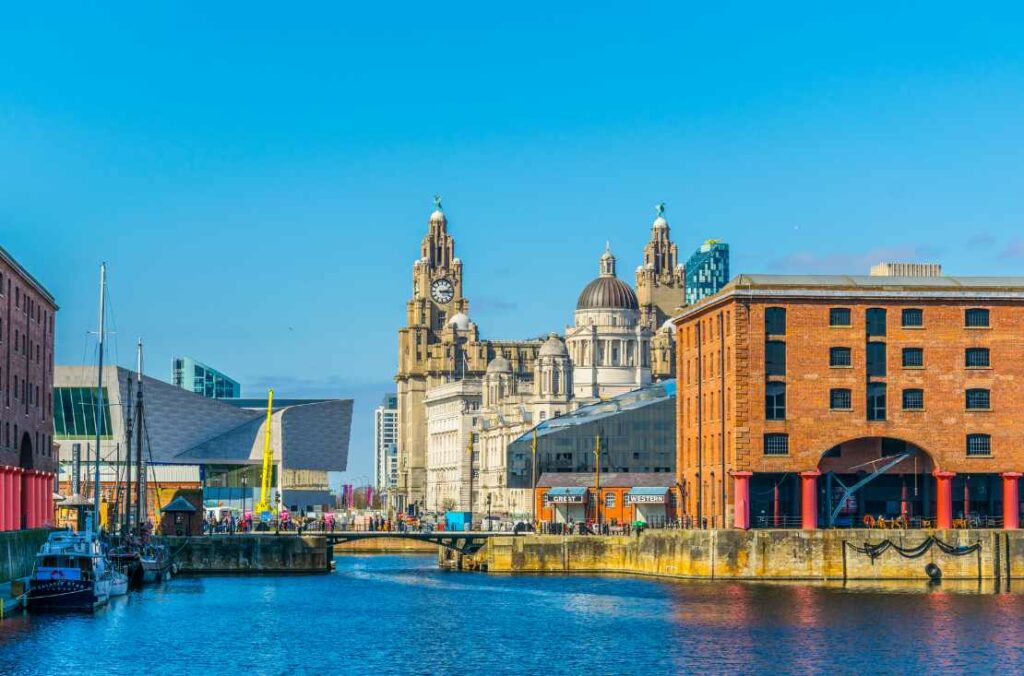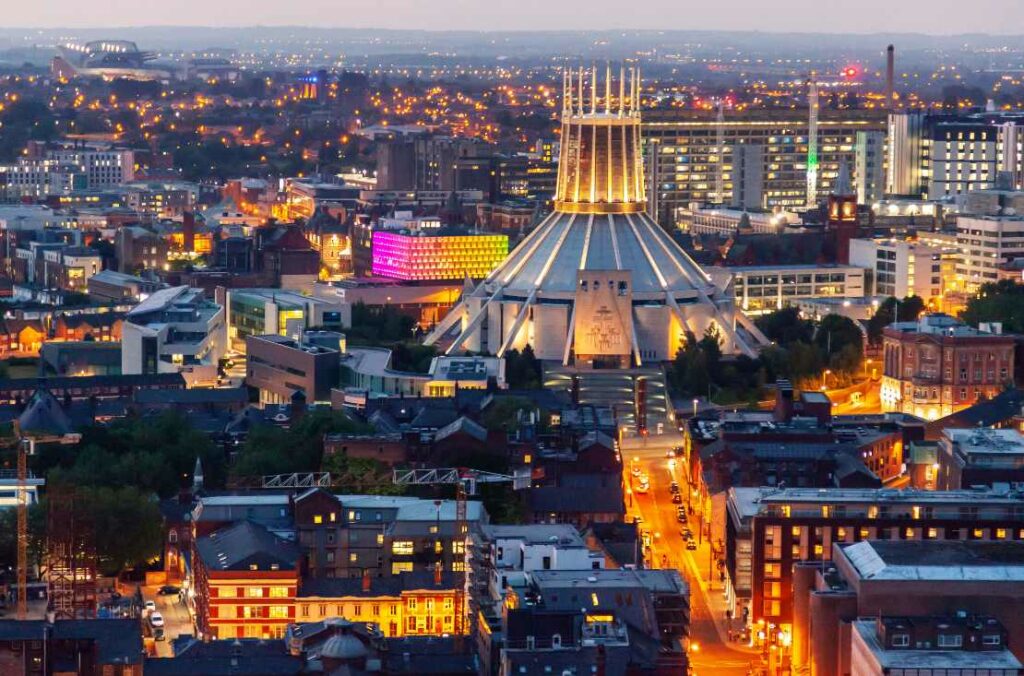Recently we looked at one of the powerhouses in the North West of England, Manchester. This month we’ll cast our attention further west, to the city that sits on the shore of the Irish sea looking ever westwards – Liverpool.
Some cities are, well, just cities. Others have a distinct identity, and they’re proud of it – Liverpool definitely falls into this latter category. Liverpudlians will tell you how special their city is, and by God, they have a point.
As a buy-to-let property specialist, Liverpool’s property market is equally exciting, with reasonably-priced properties and a high demand for quality rented homes. Let’s delve deeper into what makes this city so special and attractive.

Welcome to Liverpool
Liverpool is a metropolitan borough with a population of around 500,000. First recorded in 1190 as Liuerpul, it became a borough in 1207 and achieved city-status in 1889.
The name is widely accepted as derived from Old English, although there have been several attempts to claim that it is in fact Welsh. None of these suggestions appear to have any foundation.
Regardless, the city’s history and list of achievements is truly staggering. I know – you’re possibly thinking of The Beatles and all the great music that came out of it during the ‘60s, ‘70s, ‘80s and beyond.
But Liverpool’s list of ‘firsts’ is so long it might be easier to say they didn’t invent powered flight or the atomic bomb there! Public lending library, electric trains, municipal trams and the first railway tunnels.
There’s more – the first lifeboat station, first public bath & wash house, motorised fire engine, purpose-built ambulance, integrated sewerage system, the UK’s first Underwriters Association and the first purpose-built department store.
That’s only scratching the surface; you wonder where anyone found the time to sleep! Less laudably, Liverpool was instrumental in the development of Britain’s slave trade, although it would also produce three of the leading abolitionists.
During WWII the Battle of the Atlantic was controlled and fought from Liverpool and the same city gave us Ken Dodd, Daniel Craig, Paul O’Grady, many footballers and a few Beatles.
If you were just looking for a city where history is literally round every corner, Liverpool should be at the top of your list. If you’re interested in buy-to-let property investment, it’s an equally exciting place.

The property market in Liverpool
Liverpool has been experiencing considerable investment over the past few years, and that investment continues to this day. Such has been the level of development that UNESCO withdrew Liverpool’s World Heritage status, to the fury of the city.
Whether this event has actually affected the city and its prospects is still hotly debated. What is undisputed is that Liverpool continues to enjoy high levels of inward investment.
Property prices continued to rise in early 2023, although average prices across different property types remain attractive to potential investors. As a home to many world-class businesses, demand for homes is high.
The city has a high percentage of 22-29 year olds, a demographic which traditionally looks to rent rather than buy, making it an attractive market. Thanks to ongoing investment, it is an in-demand destination for new residents as well.
All of this adds up to a city on the up and up. We’d normally expect this to push up property prices, however at present this is not driving prices to the point where the cost/return benefits become questionable for investors.
Remember as well that Liverpool is home to four universities and their attendant student population. This serves to make it even more attractive to invest in Liverpool with healthy competition for rental properties.
No surprise then that this is an active property market, however there is a broad spread of prices across the city and property types. Average rent for a flat is currently £1,410, with houses being cheaper at an average of £1,030.
Varbes gives similar figures, although their average rent from a house is somewhat higher at a median of £1,300, with the upper quartile exceeding £1,500 pcm. This return is set against an average price of £181,919.
It’s worth noting that these figures are for the period to the end of 2022, and as we all know, a lot can happen to affect the market in six months!
However, assuming these figures to be correct, they suggest a lot about where the demand in the market is at present, and would align with the current demographics of the city.

Yields in Liverpool vary widely, as you would expect. L4, Anfield, sees an average yield of 7.1%, this as a result of lower overall property prices in that area. Similarly Birkenhead, on the other side of the Mersey, (CH14) benefits from low prices.
The lowest yields are found in areas like L14, comprising the suburbs of Allerton, Mossley Hill, Hunts Cross and Woolton. Here you can expect returns of around 5.4%.
L1, the city centre, is obviously popular with tenants, but generates a relatively low average rent (£698) and yield of 5.4%. Popularity drives prices, reducing yields. This is true of Liverpool as it is elsewhere.
Advice from the property pros

Like its North Western neighbour, Manchester, Liverpool represents a mixed hunting ground for property investors. If you’re of a mind to invest in Liverpool, choosing where you invest is key.
There is always high demand for rental properties in the city centre – it’s the heart of the place with the majority of facilities and attractions. That pushes property prices up, which impacts on yield.
However, if you are looking at long-term investment returns, Liverpool is seeing good returns on investment, and assuming that current mortgage rate uncertainty settles down, there’s no reason not to ignore the waterside.
Further out from the city centre, investors will find a better balance between property price and returns. Liverpool has good transport infrastructure, so you may well find that students and others are happy to travel in order to enjoy more competitive rents.
That these same rents can deliver a good return makes this a win-win situation for both tenants and landlords.
In summary…
Liverpool, like many cities which flourished during the industrial revolution, has had its ups and down. At present it appears to be enjoying something of a serious, and continuing, renaissance, and that makes it well worth consideration.
Home to major financial institutions, life sciences and some major universities, suitable properties are in great demand. For those willing to invest in Liverpool, you’ll benefit from rising, but lower than average, property prices in many areas of the city.
With many years of experience in the buy-to-let property market, and specialising in guiding and helping landlords find the right properties to start or expand their portfolio, we are well placed to help you on your journey.
If you want to discuss Liverpool and its many opportunities, or just talk over the benefits of property investment in general, drop us an email or call us to set up a meeting.
Thanks for reading! We hope you found this brief guide to the city of Scousers interesting.

Written by Chris Wood, MD & Founder of Portolio
Get in touch on 07812 164 842 or email [email protected]


Comments